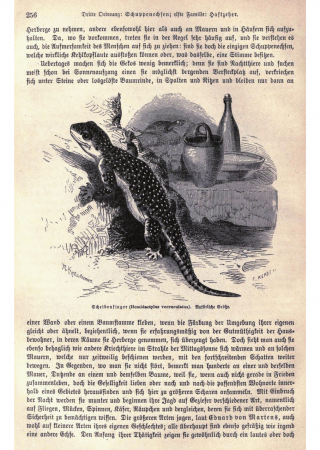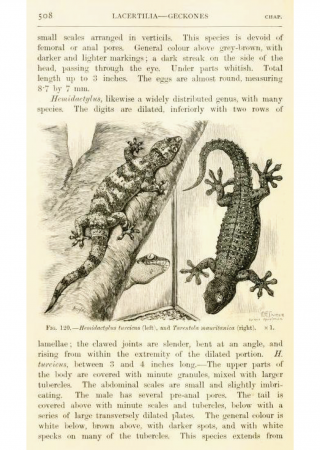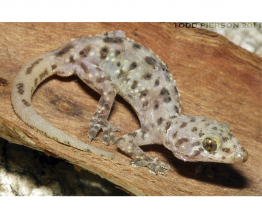House Gecko
Hemidactylus
Did you know that… ?
- …geckos have unique morphology of their extremities, which allows them to walk on vertical walls, glass or completely upside down?
- …geckos have managed to spread to islands in the Pacific, Indian and Caribbean oceans?
- …when threatened, geckos can discard the tips of their tails, like lizards?
- …geckos usually do not have eyelids, so they keep their eyeballs damp with their long and wide tongue?
- …after molting, geckos usually eat their cast-off skin?
- …in Spanish, these geckos are called "Limpia Casa" (Housecleaners), because they keep a home free of nuisance insects?
General info
Phylum: Chordata
Class: Reptilia
Order: Squamata
Size: 10 cm
Food: invertebrates, tiny vertebrates
Habitat: entire household and surrounding areas
Distribution: tropical and subtropical areas all over the world
Relationship with humans: useful
Biology
Geckos are small reptiles, mostly distinguished by special construction of their extremities. Their wide fingers have tiny 'hairs' on the surface, which allow them to grip walls and ceilings. Geckos are found primarily in tropical and subtropical areas all over the world, often visiting human dwellings and hunting insects there. They are mostly active at night, hiding during the day. These reptiles sometimes make chirping or barking noises, which can frighten a person unfamiliar with them. Females generally lay two eggs, which hatch after around a month. House geckos can live up to five years.



